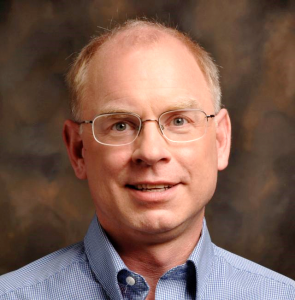Nanoscale Chemical Imaging with Photo-induced Force Microscopy
 Tuesday, February 16, 2016
Tuesday, February 16, 2016
11:30 AM – 1:00 pm
Texas Instruments (TI) Auditorium E-1
2900 Semiconductor Drive
Santa Clara, CA
map
Admission FREE. Please register here.
TITLE: Nanoscale Chemical Imaging with Photo-induced Force Microscopy
![]()
SPEAKER: Dr. Tom Albrecht, Molecular Vista, Inc.
ABSTRACT:
Infrared Photo-induced Force Microscopy (IR PiFM) is based on an atomic force microscopy (AFM) platform that is coupled to a widely tunable mid-IR laser. PiFM measures the dipole induced at or near the surface of a sample by an excitation light source by detecting the dipole-dipole force that exists between the induced dipole in the sample and the mirror image dipole in the metallic AFM tip. This interaction is strongly affected by the optical absorption spectrum of the sample, thereby providing a significant spectral contrast mechanism which can be used to differentiate between chemical species. Due to its AFM heritage, PiFM acquires both the topography and spectral images concurrently and naturally provides information on the relationship between local chemistry and topology. Due to the steep dipole-dipole force dependence on the tip-sample gap distance, PiFM spectral images have spatial resolution approaching the topographic resolution of AFM, demonstrating sub 10 nm spatial resolution on a variety of samples.
The capabilities of PiFM are highlighted by studies on various self-assembled block copolymer systems. The results consist of PiFM spectral images associated with several absorption bands of different polymeric blocks along with broad spectra associated with nano-spots on sample surfaces. Images of fingerprint patterns and parallel lamellae (prepared via directed self-assembly) for both poly (styrene-b-methyl methacrylate) and poly (styrene-b-2-vinylpyridine) show clear spectral contrast between the two blocks of each material system. For poly (styrene-b-2-vinylpyridine), PiFM contrast between blocks was far greater than is generally available by scanning electron microscopy without staining. By enabling imaging at the nm-scale with chemical specificity, PiFM provides a powerful new analytical method for deepening our understanding of nanomaterials and facilitating technological applications of such materials.
SPEAKER BIOGRAPHY:
Thomas Albrecht received a B.A. in physics from Carleton College in 1985 and a Ph.D. in applied physics from Stanford University in 1989. His thesis work on atomic force microscopy (AFM) included the first microfabricated cantilevers for AFM and the first demonstration of atomic resolution by AFM. After completing graduate school, Tom worked briefly for Park Scientific Instruments to transfer the fabrication process for microcantilevers and to help develop Park’s first AFM product.
In 1989, Tom joined the IBM Almaden Research Center (San Jose, CA) where his contributions included frequency modulation detection for AFM, and a variety of contributions to magnetic recording technology, such as a track following servo system that became the industry standard for tape drives, load/unload technology for disk drives, and the “Microdrive” – a tiny 1-inch drive that was used in consumer electronics devices such as the Apple iPod Mini. From 2002 to 2004, Tom worked on assignment at the IBM Zurich Research lab (Switzerland), where he contributed to and briefly managed the “Millipede” micromechanical data storage project.
In 2004, Tom joined Hitachi Global Storage Technologies (HGST, San Jose) where he led the company’s patterned media research team for 10 years. The patterned media project involved an ambitious combination of nanofabrication technologies, including e-beam, self-assembly, double patterning, and nanoimprint lithography. In 2013, he was named an HGST Fellow for lifetime contributions to the magnetic data storage industry.
In 2015, Tom joined Molecular Vista (San Jose) to bring to market a promising new technology combining AFM with optical spectroscopy to provide chemical imaging with nanometer-scale spatial resolution.
Tom has 148 issued U.S. patents and numerous publications.
AGENDA:
- 11:30 am – Registration & light lunch (pizza & drinks)
- Noon – Presentation & Questions/Answers
- 1:00 pm – Adjourn
Please register here.
Also, visit our Meetup Group.
